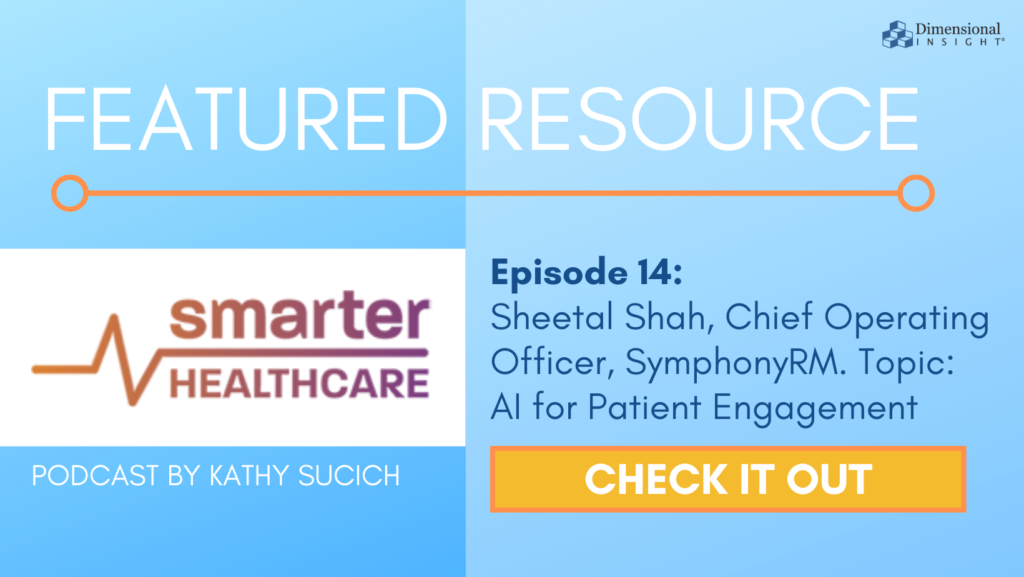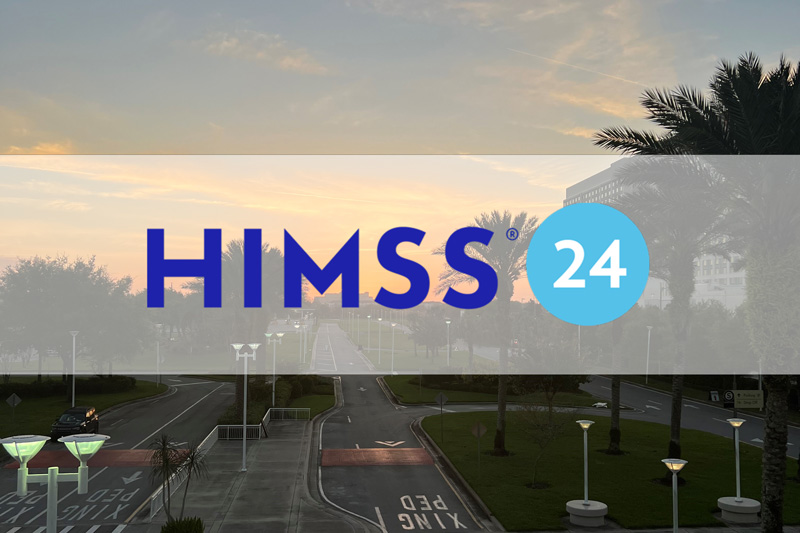As we look at how the healthcare industry is being shaped right now, it’s fair to say that technology will continue to play a huge role in how the industry advances and helps treat patients. Artificial Intelligence (AI), for example, is one piece of technology that will be extremely useful in ensuring great patient engagement, especially during the pandemic. In this blog, we’ll be looking at how AI is helping improve patient care and engagement as well as how health systems can better leverage their data in 2021 and beyond, featuring Sheetal Shah, Smarter Healthcare Podcast’s Episode 14 guest.
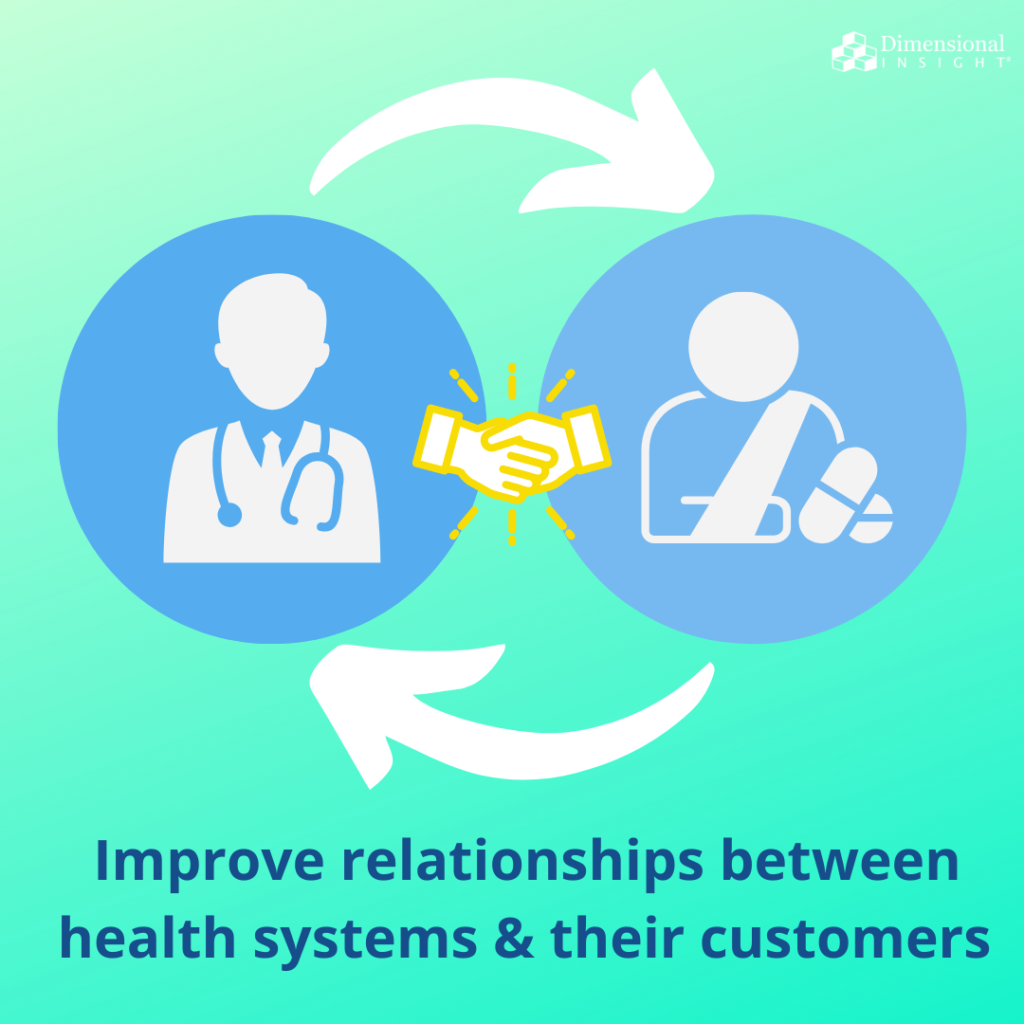
Patient outreach using risk assessments
Sheetal Shah is the chief operating officer at Actium Health (formerly SymphonyRM), a healthcare AI startup that helps systems improve patient engagement with the goal of improving relationships between health systems and their customers, as well as improving outcomes from healthcare, community, and customer experience. These AI systems are extremely valuable to hospitals as they can screen through thousands of data sets collected from electronic health records (EHR), allowing better patient outreach from the hospital as well as increased patient engagement with the healthcare organization.
To better understand the value behind these systems, Shah compares AI data collection through EHR with Amazon. “How they value the data they collect through how you shop, and in many ways, they would probably say it’s proprietary, it’s priceless,” says Shah. “It allows them to identify what consumer interests are and what demand lies in what products. They nudge you when you need something that you don’t know you need, and you probably buy it.”
Ultimately, online stores recommending products that you may not have otherwise thought to buy isn’t too different from hospitals using key risk factors in their database to reach out to patients and direct them towards a check-up or test they may need. “Clinical data, imaging, studies, et cetera. The question is how can they [hospitals and healthcare organizations] actually use that data in a way that consumers—people like us—would want them to use the data to do something about our health,” Shah says. “When you go for a visit, they look at your labs, they have context, but how often are you going into an office visit? It’s a very small percentage of your overall amount of time in a year. I think they’re using the data they have, they’re using it for one moment in time, but the true value is how do you use the whole context of the individual to manage the relationship across time versus just in that momentary visit.”
CommonSpirit Health recently adopted an AI tool similar to Actium Health (formerly SymphonyRM) where they use it to identify high risk patients and predict their healthcare needs, oftentimes before the patient themselves realizes they need to take care of something relating to their health. “If someone was coming in for a right knee replacement or somebody was pregnant and having a baby, those are considered episodes of care. So how do we help patients navigate through not just our own healthcare system, but also through all of the resources that they may need in order to have a successful clinical outcome?” says Alisahah Cole, MD, CommonSpirit’s System Vice President of Population Health and Innovation Policy.
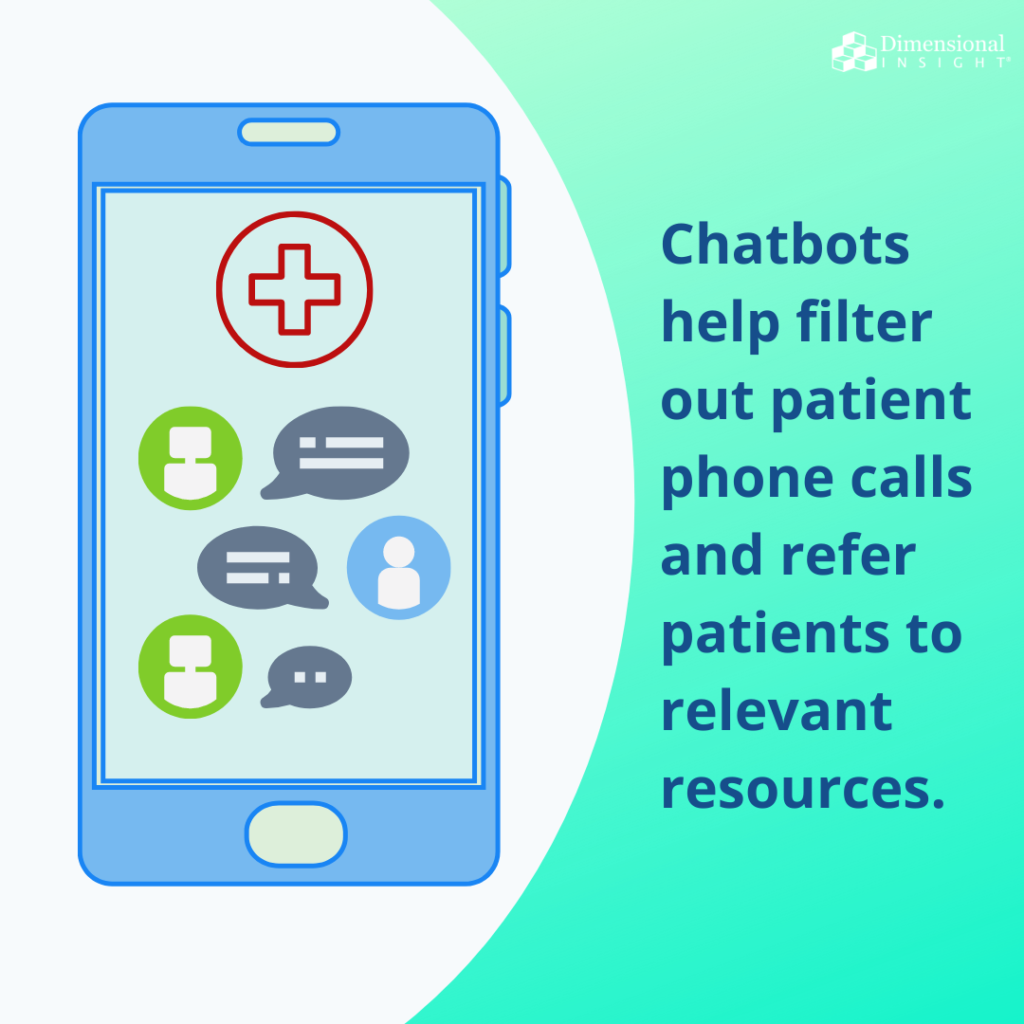
Chatbots using AI
Another innovative way AI is being used to improve patient engagement is through the use of chatbots. When shopping online, you may automatically see a box pop up in the corner of your screen asking if you need help with anything. If you type in a question, the AI-powered chatbot will scan through the question looking for key words or phrases that they can then use to redirect you to a difference source on the site that may help you find the answer to your question. This same process works in the healthcare sector as well. With more patients staying at home to avoid small checkups during the pandemic, a higher volume of calls are being made directly to the hospital, which means patients may have to stay on the line longer and receptionists/call centers get overloaded with more than they can take on. A solution to this? The chatbot. Chatbots help filter out patient phone calls and refer patients to relevant resources. A patient might call the hospital looking for parking information, and instead of being placed on hold for several minutes to an hour, they will get the answer right from a chatbot.
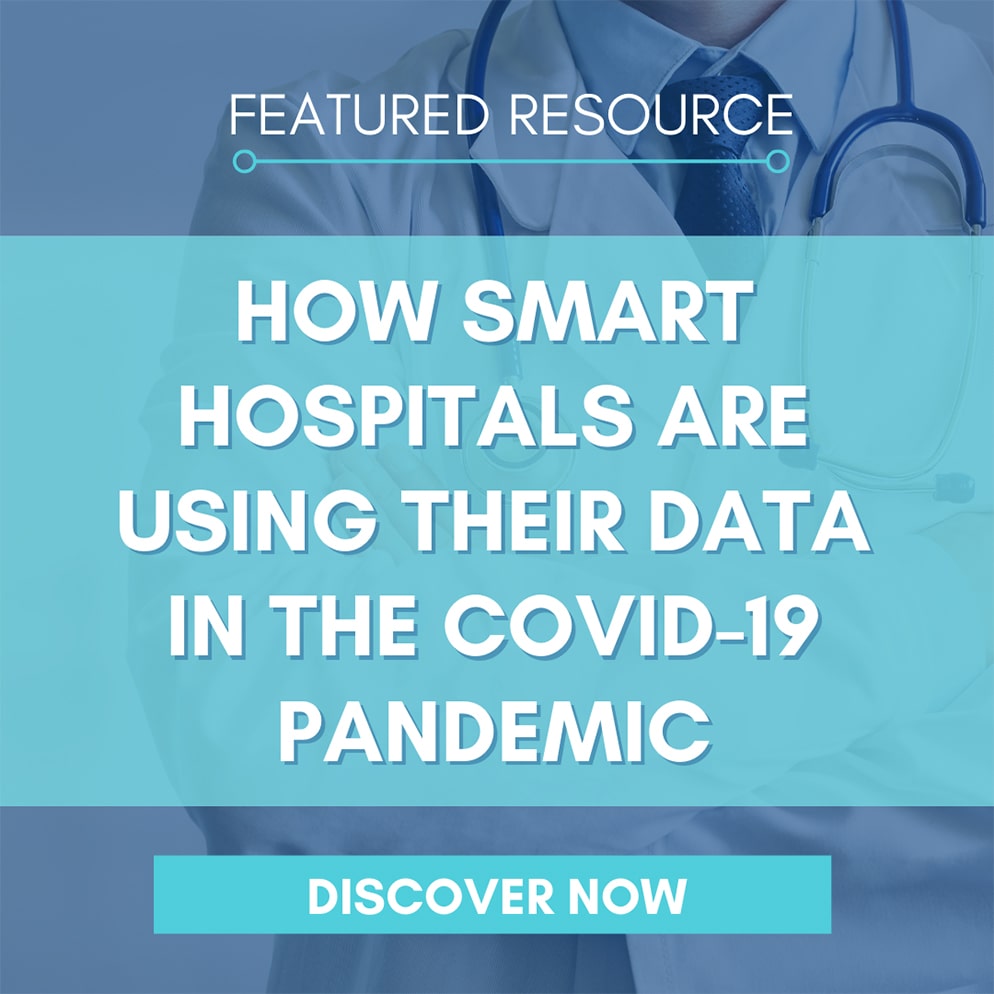 Livi, an AI-powered tool used at UCHealth, has proven to help their patients engage in their own care while better communicating with the organization. Nicole Caputo, senior director of experience and innovation at UCHealth, explains, “We first implemented the tool to be able to answer simple questions for our patients. When they come to our website, we want to help them make it easier to find a location or find a doctor.” Project manager for experience and innovation at UCHealth, Matt Andazola, adds that the chatbot became even more critical when COVID-19 hit. “There are a lot of folks who are calling into clinics and talking to people about their healthcare more, so the idea of picking up the phone and calling somebody is a little bit more difficult when there’s a higher call volume,” he says. “People are trying to do more online and interact with our digital tools in a way that they may not necessarily have done before. They’re coming to Livi and they’re asking for help accomplishing different tasks: Reading a message from their doctor, composing a new one, or finding their test results. Conversational AI is a way to bridge that gap and bring people the information they’re looking for and help them accomplish things faster, using tools that already exist.”
Livi, an AI-powered tool used at UCHealth, has proven to help their patients engage in their own care while better communicating with the organization. Nicole Caputo, senior director of experience and innovation at UCHealth, explains, “We first implemented the tool to be able to answer simple questions for our patients. When they come to our website, we want to help them make it easier to find a location or find a doctor.” Project manager for experience and innovation at UCHealth, Matt Andazola, adds that the chatbot became even more critical when COVID-19 hit. “There are a lot of folks who are calling into clinics and talking to people about their healthcare more, so the idea of picking up the phone and calling somebody is a little bit more difficult when there’s a higher call volume,” he says. “People are trying to do more online and interact with our digital tools in a way that they may not necessarily have done before. They’re coming to Livi and they’re asking for help accomplishing different tasks: Reading a message from their doctor, composing a new one, or finding their test results. Conversational AI is a way to bridge that gap and bring people the information they’re looking for and help them accomplish things faster, using tools that already exist.”
Looking ahead
AI is often thought of as a tech trend that can help create cool new products making daily life easier, but as we’ve seen throughout this blog, AI can actually be used to encourage and improve engagement among various groups of people, which is a goal that healthcare providers strive for – now more than ever. When looking ahead five years from now, Shah thinks that the greatest impact his company will have in Health IT will actually be outside of IT. “I think IT is going to be a tool, but I see us in five years having next-best-actions,” he says. “I think we’re going to be adding life years in our community by engaging individuals for the right reason, using technology to drive that engagement and ultimately drive growth, loyalty, and quality. Making healthcare personal again.”
To listen to the full episode of this podcast and to learn more about Sheetal Shah, click here.


